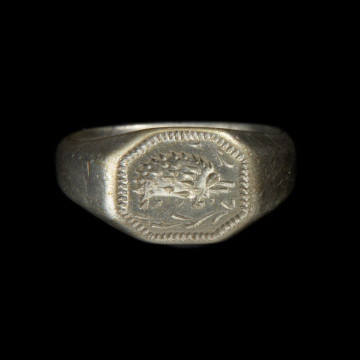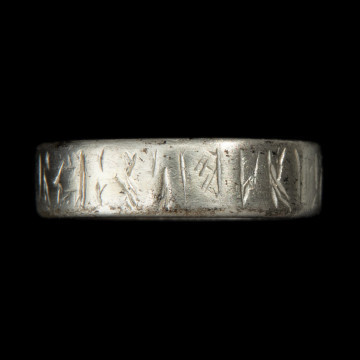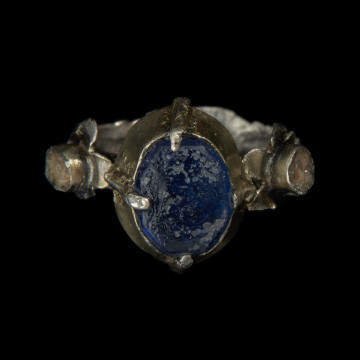
Signet ring with hedgehog
przełom XIV i XV wieku
National Museum in Szczecin
Part of the collection: Set of archaeological relics found in the Lublin Region
The artefact is part of a set of bronze ornaments (see also: 1396/A/ML-1,2,4; for more information on the circumstances of the discovery see: 1396/A/ML-1). The triangular hanger itself is an element of a two-piece ornament, which was complemented by an openwork fibula (see: 1396/A/ML-2).
The presented pendant has survived to our times incomplete. Only one of the six pendants in the shape of an elongated triangle, which were connected to the lower arm of the ornaments frame with rings, remained.
The described ornament has numerous abrasions and tears. There are also visible traces of its repair in the form of drilled small holes, as well as grinding and bending of the elements. All these attempts to repair and the remains of intensive use can testify to the great value of ornaments in those times.
Where did this pattern come from? Similar pendants found in the Pannonian Lowlands probably come from Italy. Many similar to our ornaments objects have been found in the famous cemetery in Hallstatt in Austria, from which originates the name the Hallstatt period (called the Early Iron Age). The form of the pendant most likely developed from a schematic representation of a human figure. The triangular pendant with an eye-head at the top has many similarities to the images of people represented on a vessel discovered in Hungary.
It is also interesting what function the described item could fulfill. Many similar items, found in Slovakia and Hungary, due to their dimensions of up to 40 cm in length (our artefact with the clasp is about 25 cm long), indicate that they were most likely ornaments of a horse harness. As the object we are describing was found next to the human skeleton it proves that it was a decoration worn by man.
Author / creator
Dimensions
cały obiekt: height: 14 cm, width: 6 cm
Object type
jewelry
Technique
cast
Material
bronze
Creation / finding place
Owner
The National Museum in Lublin
Identification number
Location / status

przełom XIV i XV wieku
National Museum in Szczecin

przełom XIV i XV wieku
National Museum in Szczecin

National Museum in Szczecin
DISCOVER this TOPIC
Museum of King Jan III's Palace at Wilanów
DISCOVER this PATH
Educational path